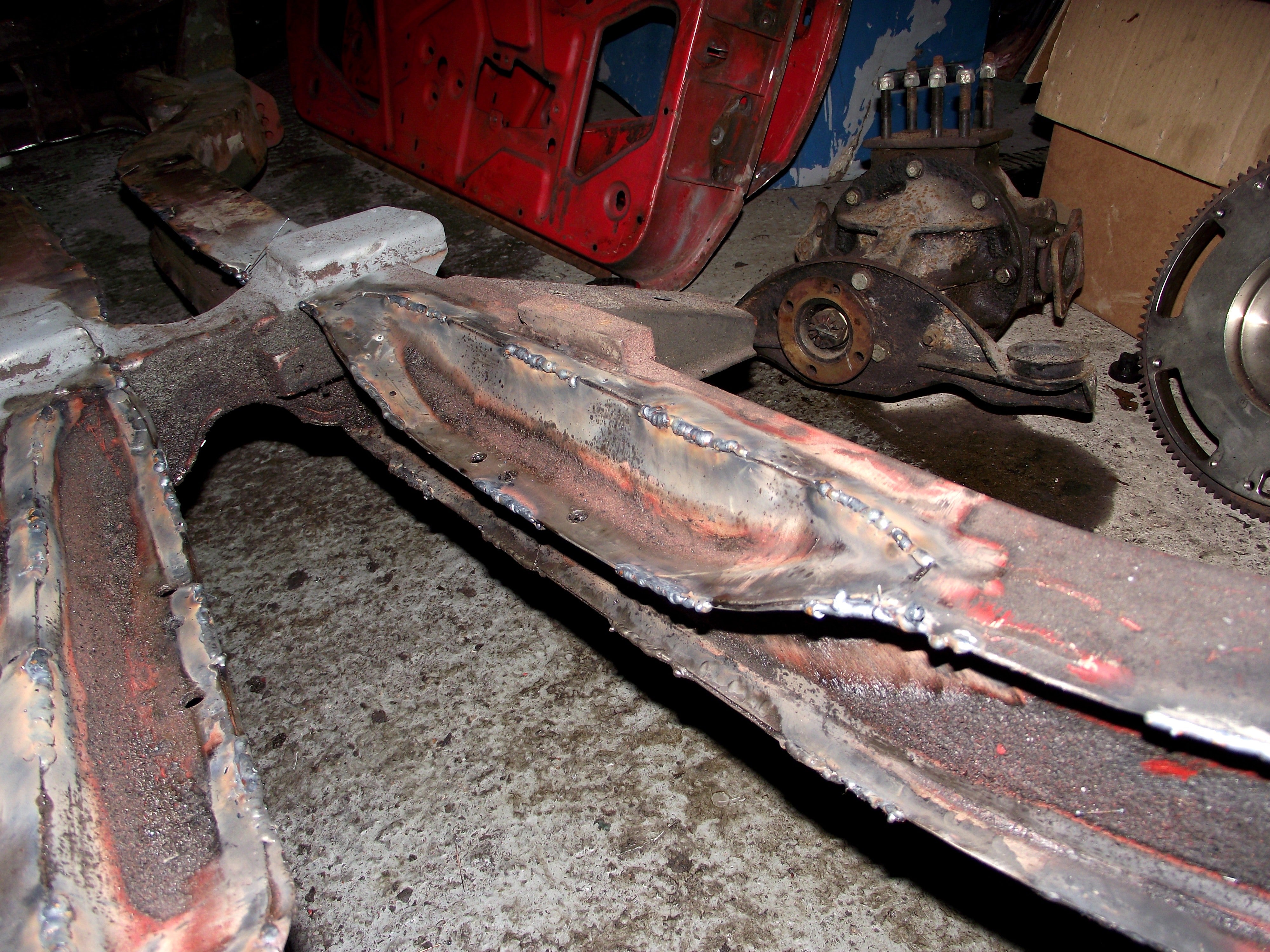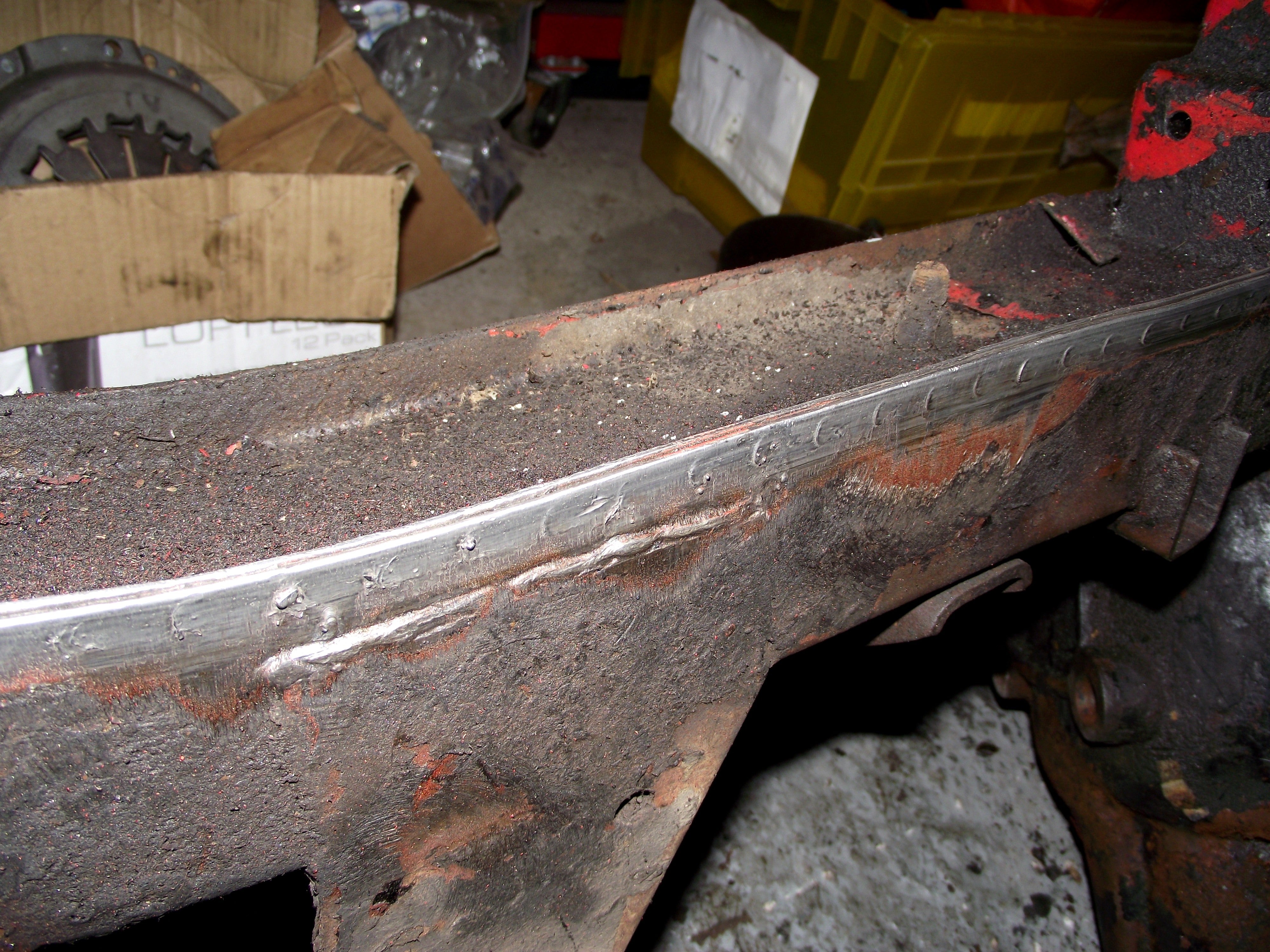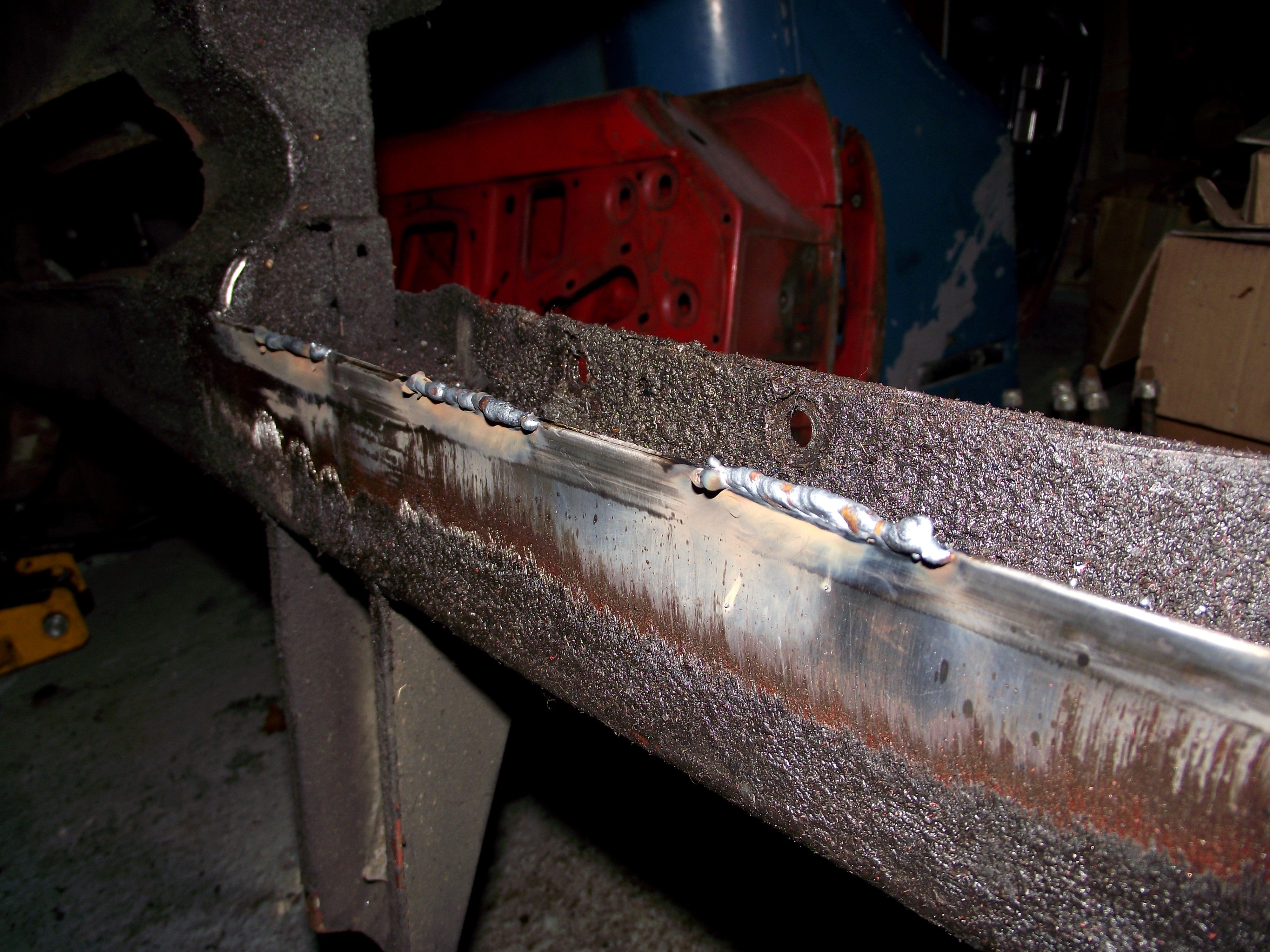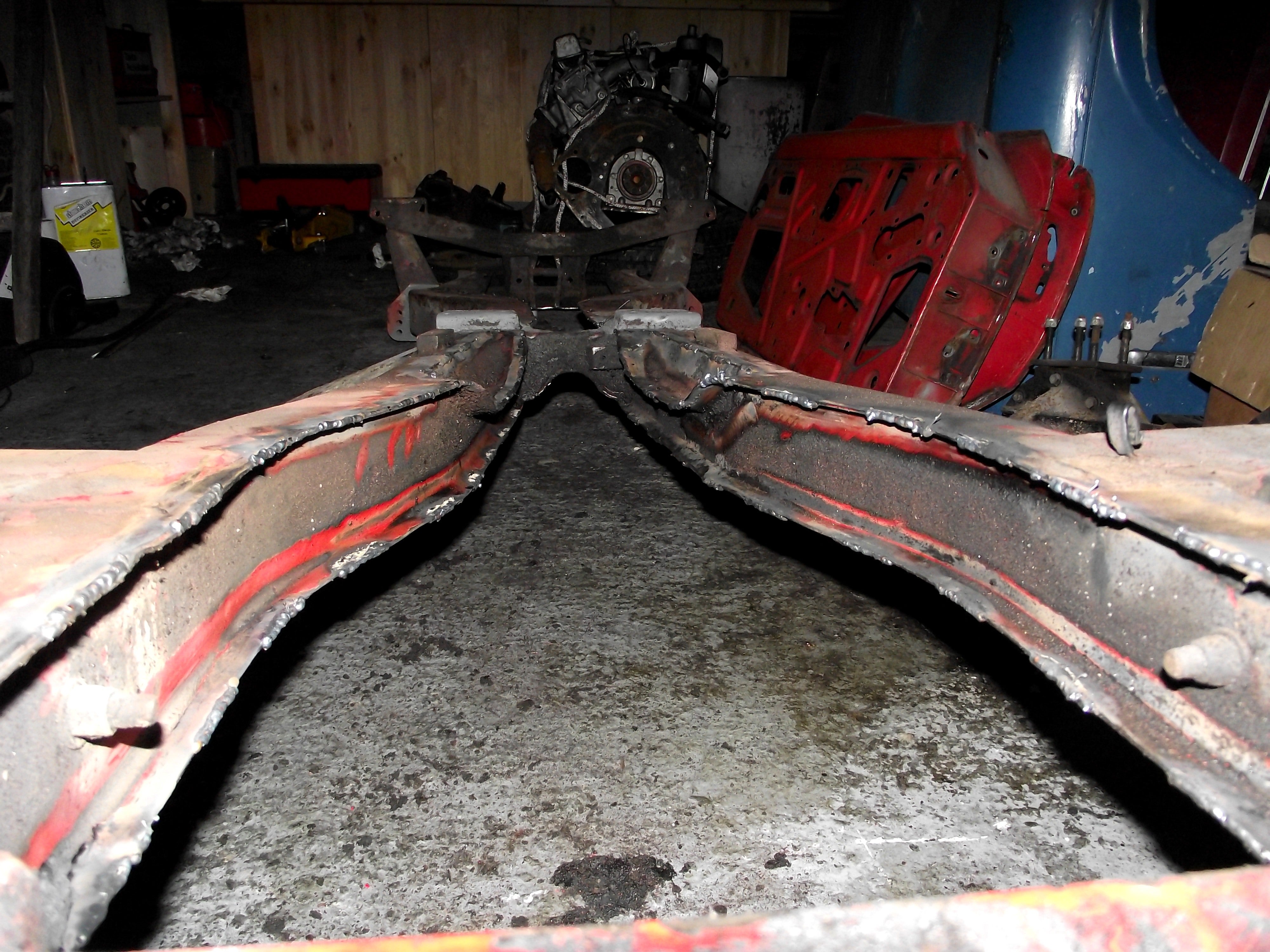 "BiTurbo228 - Dr Frankenstein of Spitfires" (biturbo228)
"BiTurbo228 - Dr Frankenstein of Spitfires" (biturbo228)
03/22/2015 at 04:39 • Filed to: Spit6
 4
4
 9
9
 "BiTurbo228 - Dr Frankenstein of Spitfires" (biturbo228)
"BiTurbo228 - Dr Frankenstein of Spitfires" (biturbo228)
03/22/2015 at 04:39 • Filed to: Spit6 |  4 4
|  9 9 |

...and by that I mean stitch welding the chassis on the Spitfire :)
I still need to do some experiments with a little box-section made of paper and some paper clips to find out a rough idea of how much this helps stiffness...



 Cé hé sin
> BiTurbo228 - Dr Frankenstein of Spitfires
Cé hé sin
> BiTurbo228 - Dr Frankenstein of Spitfires
03/22/2015 at 05:42 |
|
It would be sewing, though...
 BiTurbo228 - Dr Frankenstein of Spitfires
> Cé hé sin
BiTurbo228 - Dr Frankenstein of Spitfires
> Cé hé sin
03/22/2015 at 05:52 |
|
I knew something didn't look right...
 CRider
> BiTurbo228 - Dr Frankenstein of Spitfires
CRider
> BiTurbo228 - Dr Frankenstein of Spitfires
03/22/2015 at 06:10 |
|
Those welds are beautiful, man. Real works of art.
 BiTurbo228 - Dr Frankenstein of Spitfires
> CRider
BiTurbo228 - Dr Frankenstein of Spitfires
> CRider
03/22/2015 at 06:21 |
|
Really? I thought they were a bit scrappy :S thanks :)
 Xyl0c41n3
> BiTurbo228 - Dr Frankenstein of Spitfires
Xyl0c41n3
> BiTurbo228 - Dr Frankenstein of Spitfires
03/22/2015 at 12:09 |
|
Bad welds equal weak welds. Weak welds equal not safe. Like they say, almost only counts with horseshoes and hand grenades.
 wabbalosthiskey
> BiTurbo228 - Dr Frankenstein of Spitfires
wabbalosthiskey
> BiTurbo228 - Dr Frankenstein of Spitfires
03/22/2015 at 12:36 |
|
You are headed in the right direction and +10 for ambition, but you need to get some heat in there if you want all the work to be effective.
I'm guessing that you are using flux core wire, it's a little hard to tell because there's a lot of burning going on. If that's the case and you want to keep building your skills, spend a couple dollars and get a gas bottle and a regulator and run regular solid wire. Flux core wire does a fairly poor job of shielding the weld and contributes to the spatter, so it isn't helping you much. First step in setting yourself up for success.
When welding old stuff like that, particularly pinch welded areas, 9 times out of 10 there's going to be some amount of contamination either sandwiched in the old steel or behind it that you can't clean up first. That is going to fight you and there's nothing you can really do about it, so do your best to clean what you can. When that contamination hit the puddle it burns and spatters and pops, makes porous welds, so again, clean everything you can first. Looks like you are doing a good job here, just emphasizing it's importance.
When the weld bead is tall and glob-like they way those are, you're not welding the metal together - You're piling it on the surface. You have to remember at its very basics all types of welding is melting metal, and the MIG is handy because it adds the filler for you. So when wielding a MIG torch, your first priority is use the arc to melt the steel and make a puddle, and second you use the wire speed to control where that melting happens. Often time people turn down the speed because they think that makes it slower and hotter, this is wrong - A lot of times you turn it UP to increase the penetration and the heat, but too far will cause the weld to blow through the metal you are welding.
It's a little hard to tell from the photos, but I don't see a lot of heat in the metal, so start by turning up both voltage to get some heat in it and wire speed to get some penetration, and see how you do. Carry on...
 BiTurbo228 - Dr Frankenstein of Spitfires
> wabbalosthiskey
BiTurbo228 - Dr Frankenstein of Spitfires
> wabbalosthiskey
03/22/2015 at 13:14 |
|
Hmmm, sounds like you know your stuff :) I am using solid wire with pure shielding gas (argon I think, can't remember off the top of my head). A lot of the spatter is caused by oil that's seeped in-between the seams that try as I might I can't get out. I've even tried soaking the area in degreaser and blowing it with an air gun but it still bubbles out as I'm welding.
I'll try wacking the heat up a bit to get some more penetration. Perhaps go for seam-welding so I'll join up those welds I've got already (or grind them down and start again). I'll post some pics in an hour or two, see what you reckon :)
 BiTurbo228 - Dr Frankenstein of Spitfires
> Xyl0c41n3
BiTurbo228 - Dr Frankenstein of Spitfires
> Xyl0c41n3
03/22/2015 at 13:16 |
|
I thought they were stuck pretty fast, just didn't look as pretty as some of the fabricator things you see on speedhunters and the like...
 Xyl0c41n3
> BiTurbo228 - Dr Frankenstein of Spitfires
Xyl0c41n3
> BiTurbo228 - Dr Frankenstein of Spitfires
03/22/2015 at 14:00 |
|
Wabbalosthiskey below is right, when the bead is high like that, you're just piling material on, not really fusing the two pieces together. It might be strong enough when you apply pressure with your hands, but that doesn't mean it's strong enough. Machine fabricated stuff isn't the only way decent welds can be made. It might be worth it to get a couple pieces of scrap and practice making seams on that first. At least you know you wouldn't have any contaminants jacking up your welding so you'd be better able to judge your progress.